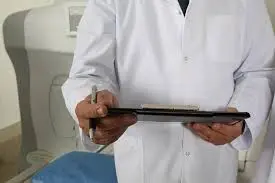
Sudden Hearing Loss is a Medical Emergency
Fast, noticeable losses
For me, a sudden left-sided deafness became a scary and life-altering event. The longer name for this condition is Sudden SensoriNeural Hearing Loss (SSNHL). “Sensori” refers to damage to the inner-ear cochlear hearing cells and “neural” refers to damage to the hearing nerve. Although both ears may be involved, in most cases only one ear is affected.
SSNHL is defined as a loss of 30 dB or more over 3 consecutive frequencies over 72 hours or less. Such losses are very noticeable. Speech turns into whispers. I perceived a gradual shut-down in my left ear and within roughly 4 hours, the ear was deaf.
Don’t waste time
SSNHL is considered a medical emergency. Get help! Report immediately to your primary physician. However, due to appointment constraints and the lack of in-office testing facilities and equipment, doctors usually recommend that patients should go at once to the Emergency Room. What is causing this? In any event, one wants to stem the damage process and salvage as much hearing as possible.
That said ─ besides significant hearing loss ─ alarming symptoms like ear stuffiness, tinnitus (ringing, buzzing, hissing in the ear), balance disturbances and dizziness and maybe vertigo tend to convince people to make the E.R. their first stop.
The emergency physician stabilizes the patient and starts a work-up. If the evaluation and test results fit an SSNHL diagnosis and if there are no contraindications, the E.R. doctor – maybe with the agreement of the primary physician – will start a course of steroid anti-inflammatories. There is a treatment time window and this medication should be started without delay. The best effects are noted within the first two weeks.
Upon discharge from the E.R., the patient is told to see an ENT (Ear, Nose and Throat) specialist as soon as possible for follow-up and further evaluation with diagnostic hearing and balance tests and maybe steroid instillation through the eardrum directly into the ear.
Avoid referral delays
However, as it takes months to get an appointment with an ENT, physician intervention is needed for the patient to be seen in a timely fashion. Therefore, the E.R. physician or the primary doctor must order an emergency referral and/or contact the ENT office directly. Patients simply do not have enough clout to break through the waiting list logjam.
In the end…
Even after detailed investigations, a definite cause for SSNHL is often not found. Might it be due to a combination of things? In my case, a viral infection combined with a super loud noise exposure and a stress event led to the “perfect ear storm”, it seems. That said, I do credit fast medical intervention and treatment for the amount of recovery that I have made. All things considered it could have been a lot worse.
*****
For Industry Hearing Safety Training or for general presentations on Hearing Loss Prevention, please see this website or email monique.hearing@gmail.com
Zoom presentations available.
Interested in Hearing Loop Technology for better hearing in loud places? Check out loopminnesota.org